Pro-liberty student group sues UAH over speech policy

Young Americans for Liberty, a student group at the University of Alabama Huntsville (UAH), sued the school over a campus speech policy Tuesday. The school’s “Use of Outdoor Areas of Campus” policy requires students to seek approval for campus speakers three days in advance and leaves the permits subject to university approval. The conservative student group argued that this policy violated Alabama’s Campus Free Speech Act by affording the university the ability to cherrypick which viewpoints are permitted on campus. Attorneys from Alliance Defending Freedom are currently representing the UAH campus chapter of Young Americans for Liberty in the suit filed in Madison County. “Alabama law is clear: students don’t need a permit from college officials to speak on campus, but that’s exactly what the University of Alabama in Huntsville is doing—violating the law and shutting down speech on campus,” ADF Legal Counsel Michael Ross said. “Public universities are the very places that should be encouraging free speech, not stifling it with burdensome and illegal rules.” A representative of UAH did not comment on the specifics of pending legislation but stated, “The University of Alabama System Board of Trustees, the University of Alabama System, and the University of Alabama in Huntsville (UAH) are steadfastly committed to the freedom of speech and expression for all campus community members. Our policies were implemented to preserve this important constitutional right.”
New investment fuels aerospace job growth across Alabama
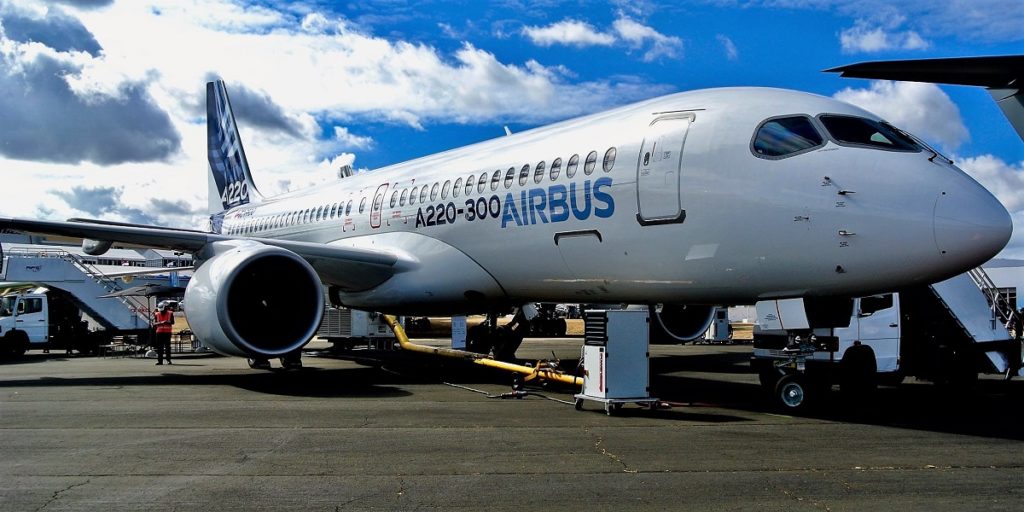
Momentum continues to build in Alabama’s aerospace industry, which is adding new investments and hundreds of jobs to produce innovative, in-demand products in communities across the state. In 2017 alone, there were announcements totaling nearly $690 million and 1,750 jobs. Those numbers increased the sector’s cumulative investment over the past seven years to almost $2.4 billion, along with 8,348 aerospace and defense jobs during the same time period. This year, there’s a hiring surge, as the plans become reality. And more jobs are on the way. At last week’s Farnborough International Airshow, defense contractor BAE Systems and Carpenter Technology Corp., a maker of premium metals and alloys used in the aerospace industry, announced expansions of their Alabama operations. Together, these projects will create more than 250 jobs in north Alabama. Meanwhile, growth plans are already in place for aerospace companies operating across the state. Airbus’ Alabama factory, for instance, is in linefor 600 new jobs, thanks to a planned second assembly line for the Bombardier C Series jetliner (renamed the A220), as well as a potential increase in the production of A320 Family aircraft. GE Aviation plans to double its 90-member Huntsville workforce in the coming year and increase to 300 when the new factory complex for silicon carbide materials reaches full production. The company is also adding workers at its Auburn facility, which mass produces a jet engine fuel nozzle using additive manufacturing, or 3-D printing technologies. Targeting growth Aerospace companies from around the world are seeing that Alabama offers plenty of advantages to help them expand their business, said Greg Canfield, secretary of the Alabama Department of Commerce. “From complex military weapons systems to innovative passenger aircraft, and many of the break-through technologies that power them all, Alabama is home to an impressive array of the industry’s leading products,” Canfield said. “How do we do it? In Alabama, we take partnerships very seriously. A company’s strategic vision and expertise, coupled with the skill and dedication of our highly trained workforce, is always a winning combination.” Canfield joined Gov. Kay Ivey and an Alabama team at Farnborough for appointments with executives of 16 aerospace companies, including Airbus, Boeing, Leonardo and GE Aviation. The talks were aimed at bringing home new investment and jobs in the aerospace sector. Aerojet Rocketdyne One of last year’s key announcements was Aerojet Rocketdyne’s $46.5 million, 800-job expansion project in Huntsville. The company is consolidating its Defense division headquarters and Rocket Shop advanced programs to the Rocket City, where it has had a presence for more than 50 years. It has also moved into a new office space at Cummings Research Park and is building a new Advanced Manufacturing Facility that will produce subassemblies and components for the AR1 rocket engine, composite cases for rocket motors, 3-D printed rocket engine components and other parts. James Ramseier, site leader for operations at the Huntsville Advanced Manufacturing Facility, said construction is about 60 percent complete and right on schedule. “We plan on opening that facility in December of 2018, and initially in 2019, we are going to go through product verification. In 2020, we will ramp up to full production,” he said. Ramseier said everyone in Huntsville, from major business groups to individual building inspectors, has been supportive and welcoming. “The culture here is, ‘Let’s all work together to help make you successful,’” he said. “It’s a pleasure working in an environment where people want you to succeed. “You don’t feel like a stranger. As soon as you move here, you’re part of the family.” Aerojet Rocketdyne’s hiring plans are moving forward as well, with support from Alabama’s top worker training agency. “AIDT is fantastic. We’re working with them every week on developing our training plans and material, and they have been outstanding to work with,” Ramseier said. Forging partnerships The company is also impressed with the ties between business and education in the community, said Bill Bigelow, chief of defense communications. “The partnerships here are very attractive to us,” he said. “We’re growing the future workforce, as we grow our presence here in Huntsville, partnering with Alabama A&M University, the University of Alabama in Huntsville and other area educational institutions, as well as the chamber of commerce and the mayor’s office.” Bigelow said the Tennessee Valley is clearly committed to bringing in the types of jobs and training programs that will grow a generational workforce. “The knowledge and the history in all things aerospace, missile-defense and industrial base operations is here, and Aerojet Rocketdyne wants to leverage that community expertise both now and well into the future,” he said. Republished with the permission of the Alabama Newscenter.
Personnel note: UAH President Robert Altenkirch announces retirement
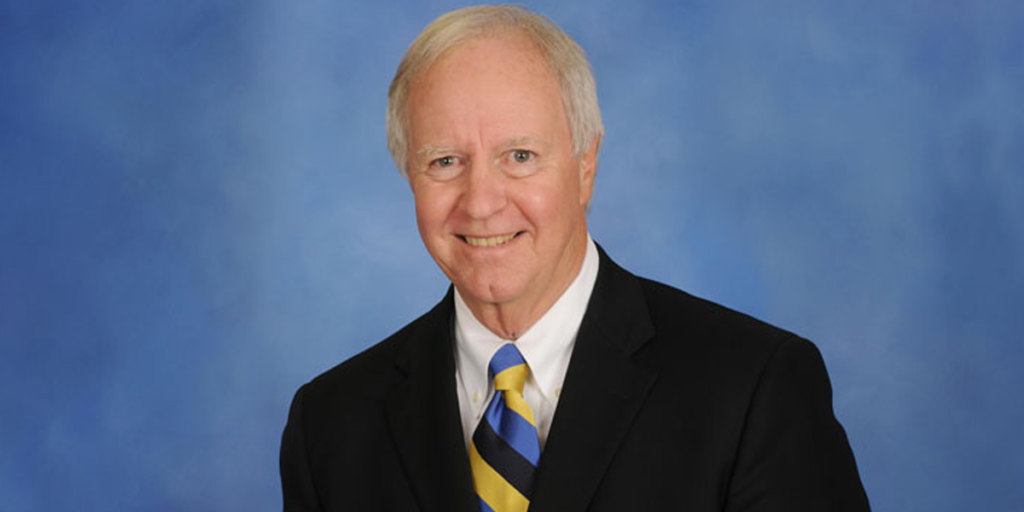
Robert Altenkirch, president of The University of Alabama in Huntsville announced his retirement on Monday. Altenkirch sent a memo making the announcement to faculty, staff, and students. “It is an honor, a privilege, and a pleasure to serve as President of The University of Alabama in Huntsville, and I look forward to us continuing on our trajectory of progress this coming academic year,” Altenkirch wrote. In the memo, the 70 year old who’s in his seventh year at UAH, detailed he will remain in position during the 2018-2019 academic year until his successor is chosen. Altenkirch has served as the president of UAH since September 2011. Prior to that, he was president of the New Jersey Institute of Technology. Huntsville Mayor Tommy Battle said he appreciates all of Altenkirch’s hard work. “President Altenkirch’s success at UAH is clear to see. The City of Huntsville is appreciative of all his hard work on behalf of UAH to achieve record setting results that have had a direct impact on the lives of students and the economy of the Rocket City,” Battle said. “Bob has been a great partner to Huntsville and the entire North Alabama region, and we wish him all the best in his retirement.”
Analysis: Alabama bioscience industry’s impact tops $7.3 billion a year
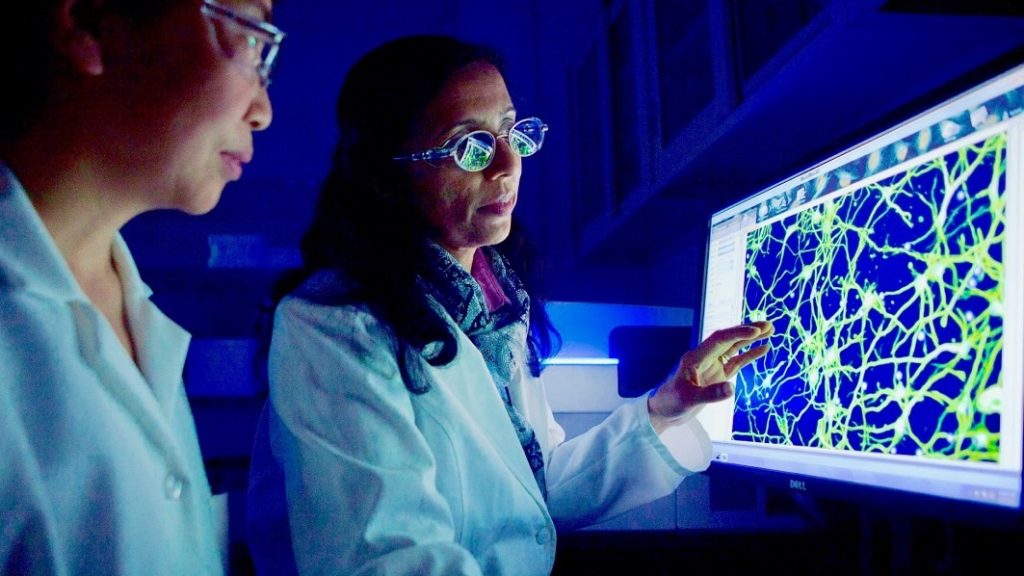
Alabama’s multifaceted biosciences industry generates $7.3 billion in economic activity annually while supporting 780 companies and nearly 48,000 direct and indirect jobs across the state, according to a new analysis by researchers at the University of Alabama. The comprehensive study underscores the contributions and growth potential of the statewide life sciences sector, a robust combination of research institutions, medical labs, innovative startups, international pharmaceutical manufacturers and more. “We have exceptional strengths in biosciences, including world-class research organizations and a roster of cutting-edge companies, so it’s a natural growth area for the state,” said Greg Canfield, secretary of the Alabama Department of Commerce. “We’re committed to helping accelerate the development of the life sciences sector, and we want the state to become home to more of these high-paying jobs and the talented individuals to fill them,” he added. Massive impact The analysis, conducted for the BioAlabama industry trade group, shows that Alabama’s 780 life sciences companies directly employ 17,871 workers, each earning an average annual salary of $67,664. Total expenditures of those companies exceed $3.8 billion a year. Other key findings in the University of Alabama report: The bioscience industry’s 47,980 direct and indirect jobs in Alabama support a total yearly payroll of $2.3 billion. The industry contributes $3.9 billion annually to Alabama’s gross domestic product (GDP), nearly 2 percent of the state’s total economic output. The industry’s earnings impact generates $161.4 million in tax revenue annually, including $74.7 million in state income taxes and $86.7 million in state and local sales taxes. In addition, the UA researchers examined the economic contributions of bio-industries such as agricultural feedstock and chemicals, and bioscience-related distribution. They found that these activities magnified the impact of the core life sciences sector in Alabama, elevating overall economic output to $11 billion a year with more than 70,000 jobs and annual tax revenue topping $233 million. “This analysis confirms the far-reaching impact of Alabama’s bioscience industries throughout the state, and demonstrates why we continue to pursue strategies that allow the sector to continue to grow and create even more high-caliber jobs across the state,” said Blair King, president-elect of BioAlabama and manager of economic development and existing industry at Alabama Power Co. Diverse activities The foundations of Alabama’s bioscience research rest on the work conducted by the University of Alabama at Birmingham (UAB), Southern Research, the HudsonAlpha Institute for Biotechnology, and the University of South Alabama’s Mitchell Cancer Institute. The specialties of these organizations include drug discovery and development, genomics, and personalized medicine. They also frequently engage in collaborations such as the Alabama Drug Discovery Alliance, a partnership between UAB and Southern Research that has developed a pipeline of potential therapeutics for diseases such as cancer and diabetes. Alabama is also home to multinational companies involved in pharmaceutical and medical device manufacturing. In March, Germany’s Evonik, for example, announced plans to expand production of biomaterials and launch a Global Competence Center for Medical Devices at its Birmingham facility. “Evonik’s investments in the Birmingham site reflect its commitment to the medical device and drug delivery business as well as the city of Birmingham and its history of world-class medical research and technology,” said Kel Boisvert, Birmingham site manager for Evonik. Other manufacturers operating in the state include Kowa Pharmaceuticals (Montgomery), Nektar Therapeutics (Huntsville), Baxter and Pharmavite (both Opelika), and Oxford Pharmaceuticals, Avanti Polar Lipids and BioHorizons (all Birmingham). At the same time, a number of innovative startup companies have sprung up in Alabama, with many of them based at HudsonAlpha and Birmingham’s Innovation Depot, the Southeast’s largest technology business incubator. Promising startups include Birmingham’s Blondin Bioscience, Huntsville’s GeneCapture, Mobile’s Swift Biotech and Auburn’s Vitruvias Therapeutics. “We are fortunate to have started our business in Alabama because we have benefited from the highly collaborative entrepreneurial spirit throughout the state, including Alabama Launchpad and the various Small Business Development Centers, and especially our connection with HudsonAlpha and the University of Alabama in Huntsville,” said BioAlabama President Peggy Sammon, CEO and co-founder of GeneCapture. “We have been able to find highly skilled molecular biologists, chemical engineers, optical engineers and lab specialists,” she added. “Our membership in BioAlabama has connected us with other scientists and business professionals who have significantly helped us advance our business plan.” Alabama’s research universities are key players in the bioscience ecosystem and contribute to the industry’s economic impact. The network includes Auburn University, USA, Tuskegee University, Alabama State University, Alabama A&M University and the three University of Alabama System campuses. The analysis is the first to comprehensively examine the economic impact of the state’s bioscience sector. It was prepared by Senior Research Economist Sam Addy, Ph.D., and his team at the Center for Business and Economic Research at the University of Alabama’s Culverhouse College of Business, with assistance from BioAlabama. Addy noted in the report that investing in life sciences should remain a pillar of the state’s overall economic development strategy. “Alabama should continue to keep biosciences as a focus in its economic development strategy since these industries provide high-wage jobs and are highly productive,” he writes. What others say “Since launching its cancer program in 1946, Southern Research has discovered seven FDA-approved oncology drugs and made many significant discoveries that have helped patients with cancer and other diseases,” said Art Tipton, Ph.D., president and CEO of the Birmingham nonprofit. “This highlights the vital importance of the groundbreaking bioscience work that continues to be done in labs in Alabama.” “I see UAB as not only the hub for healthcare innovation in Birmingham, but definitely throughout the state and the region,” said Kathy Nugent, Ph.D., executive director of UAB’s Harbert Institute for Innovation and Entrepreneurship. “That means producing as many companies as possible. It’s harder to produce biotech companies, because it takes time to develop new drug therapies. What we’re trying to do is think about it strategically and give our faculty the resources they need to be entrepreneurial to turn their research into new life sciences ventures.” “HudsonAlpha has gone from just a handful of startups and faculty to more than 35 life sciences companies and 15 faculty investigators in just 10 years,” said Carter Wells, vice president for economic development at HudsonAlpha. “It goes to show that Jim Hudson and Lonnie McMillian’s model works, and we’re proud
Women of Influence: NASA astrophysicist Dr. Colleen Wilson-Hodge
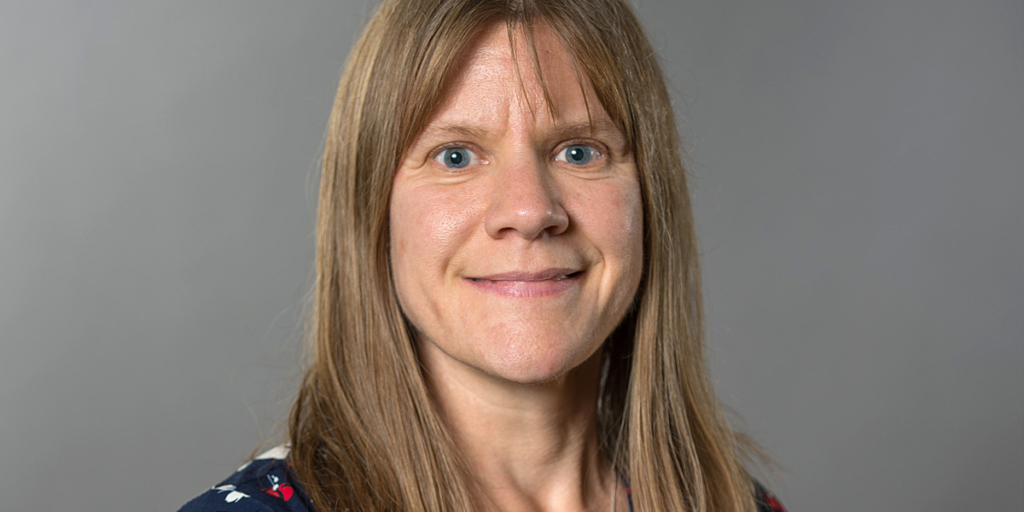
Alabama has been home to many pioneers in many different industries, but after several new astronomic discoveries, long-time Huntsville resident and NASA astrophysicist Dr. Colleen Wilson-Hodge has set herself apart in a big way. From an early age, Wilson-Hodge had a love for astronomy and space few could match. In the sixth grade, she took an overnight field trip to the Space and Rocket Center in Huntsville, Ala., where she toured NASA’s Marshall Space Flight Center. “I think that was the first time I realized I could actually work for NASA as a grownup,” she said. In college she became a NASA co-op student, alternating between classes and working for NASA she met Dr. Gerald Fishman, who was managing the Burst and Transient Source Experiment (BATSE) at the time. She caught his excitement for the project, and began studying gamma ray bursts in 1989. Wilson-Hodge graduated with a Master’s degree in Physics from the University of Alabama in Huntsville in 1996, and immediately began studying for her Ph. D. in Astrophysics, which she obtained in 1999. In 1999 Wilson-Hodge discovered a special type of pulsar called an X-ray pulsar, which led her to the finding of two new stars. X-ray pulsars emit X-rays and gamma-rays and are powered by accretion, stars gobbling up material from a companion star. “For just a little while, the universe is putting on a show that only I, and members of the gamma-ray team know about,” Wilson-Hodge told the Marshall Space Flight Center. She continued to work on the BATSE project until 2000, when the monitor was de-orbited. Wilson-Hodge continued working at the Marshall Space Flight Center, and made another discovery in 2011, when she and her team revealed unexpected changes in X-ray emission from the Crab Nebula. “For 40 years, most astronomers regarded the Crab as a standard candle,” she told UAH. “Now, for the first time, we’re clearly seeing how much our candle flickers.” In August of 2017, Wilson-Hodge and the Fermi Gamma-ray Burst Monitor (GBM) team gave the world its first detection of light from the same source as gravitational waves, which according to NASA are “ripples in space and time.” “This new way of learning about the universe is kind of like gaining a new sense. It’s as if we’ve been watching the news for all of human history, but the T.V. has been on mute, now with gravitational wave detectors, we’re finally able to turn on the sound,” said Wilson-Hodge’s associate Tyson Littenberg. “When we built GBM and launched it on Fermi in 2008, we designed it to detect gamma-ray bursts well,” Wilson-Hodge told NASA. “Back then, it was only slated to fly for five years. Today, GBM is at the forefront of an entirely new type of science, ushering in this new era of multi-messenger astronomy.” Her findings won her, and the GBM team the 2018 Bruno Rossi Prize, the top prize in high-energy astronomy. Wilson-Hodge is a extremely “bright star,” in the world of scientific discoveries, and was kind enough to take time out of her busy schedule to answer some of Alabama Today’s questions about her life, work and influences: How have other women influenced your success? Several women in my life have had a positive influence. The first is my Mom, Carol Wilson, who always encouraged me to pursue my dreams, even if they were out of the ordinary. She has always believed in me and celebrated my successes, and still does! Another was Ms. Sutherland, my high school speech and drama teacher. She taught me much about public speaking that I still use today. I hear her voice in my head sometimes when I’m preparing talks. Early in my career at NASA, I worked with mostly men. One woman did have a big impact on me though. Her name is Dr. Jean Swank. She was the project scientist for the Rossi X-ray Timing Explorer, a satellite that I used quite a bit of data from in my PhD Dissertation. She is an excellent scientist and an extremely capable leader and she is a quiet person like me. She was my first in person example of someone like me leading a space experiment, something that I always wanted to do, and she was a mentor to me. More recently Dr. Linda Sparke from NASA HQ spent a year leading the project that I now lead. She is also an excellent scientist and leader and an extremely good reader of people. She was leading a project where she wasn’t the expert in the specific science area, so she led collaboratively, getting the inputs she needed from the experts on the team to make decisions. She wasn’t afraid to say she didn’t know, but knew where to go to get the information. She was a great mentor to me as I became the principal investigator of the Fermi Gamma-ray Burst Monitor. What shaped your desire to work with NASA, specifically high energy astrophysics? I was fascinated by the Voyager images coming back from Jupiter and later Saturn when I was a child. I would clip the photos out of the newspaper and collect them. In the third grade, I told my classmates I wanted to be an astrophysicist, partially because I liked the big word and partially because I was interested in space. In the sixth grade, my school from Athens, TN, took an overnight field trip to the Space and Rocket Center in Huntsville, Ala., where we toured NASA’s Marshall Space Flight Center. I think that was the first time I realized I could actually work for NASA as a grownup! When I was in college, initially at University of Tennessee in Chattanooga, I was hired as a cooperative education student at NASA MSFC. Initially I wasn’t working in astrophysics at all, and I thought my interest was to go into radio astronomy. While I was at MSFC, I walked down the hall to the Astrophysics Division and met Dr. Gerald Fishman who led the Burst and Transient Source Experiment (BATSE) which was to be launched on the Compton Gamma ray
Women of Influence: U.S. Space and Rocket Center CEO Dr. Deborah Barnhart
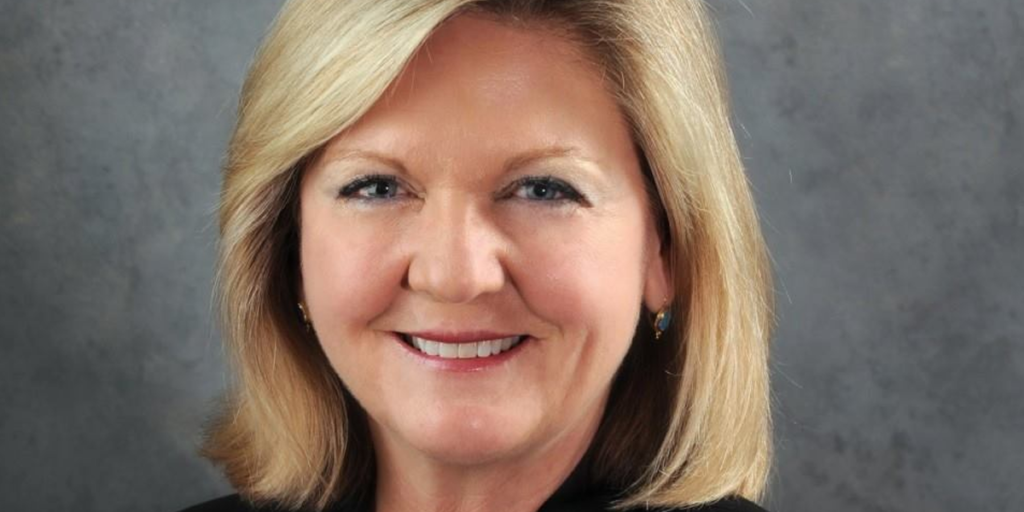
Huntsville, Ala. native Dr. Deborah Barnhart has been working on and off with the U.S. Space and Rocket Center in Huntsville for over 40 years. Her career has taken many different twists and turns, but she finally “landed” at her home base in January of 2011. Barnhart graduated from the University of Alabama in Huntsville in 1973; while she was finishing her senior year she worked in the public affairs and marketing offices at the U.S. Space & Rocket Center. A few years after graduation she came back on staff at the space center managing publicity for the museum’s newest addition — the Space Shuttle. At the age of 27, Barnhart decided to switch gears and joined the U.S. Navy, hoping to work with satellites. However, the Navy had other plans for her. She attended Officers Candidate Schoo (OCS)l, and after graduating at the top of a class of 500 people, was given the opportunity to become one of the first ten women ever to serve on a Navy sea vessel. And she took it. “I was the seventh woman to be certified to fight on and drive Navy vessels,” she told Kari Hawkins in an interview. “I drove ships on the west coast and the east coast. I loved the Navy, and the ability to see the world as a finite place. I’ve heard it said that everyone joins the military to get away from something, to ‘get out of Dodge.’ And maybe I did want to get out of Dodge, but I also joined the military to go toward something, to pursue an interest and an opportunity.” Barnhart commanded five units, experienced submarines, Navy air and space aspects, and missile defense systems throughout her 26 year military career. When she went into the Navy Reserves, she found her way back to the U.S. Space & Rocket Center for the third time in her career, this time serving as the director of Space Camp and the Space Academy. During this time she had two children and obtained a M.B.A. from the University of Maryland College Park. In 1990 Barnhart left the Space Center for the third time to pursue work in the private sector. That same year she received a doctorate degree in education from Vanderbilt University. After leaving the space center, she became vice president of Hamilton Sundstrand Space, Sea Systems International, and Honeywell Space and Defense, and reached a lifelong goal: working with satellites. She also acquired another M.B.A., this one from the Massachusetts Institute of Technology where she was a Sloan Fellow in 1998. She had retired from her long accomplished career when the Space Center contacted her in 2010, convincing her to return to the center for the fourth time, but this time to the helm of the “ship,” as Executive Director and CEO, a position she has held since January of 2011. The first year she served as CEO, Barnhart reduced the Space Center’s debt by $1 million, and brought attendance up by 13 percent after 10 years of decline. In 2017, the center had it’s all-time record attendance, with an 11 percent increase in revenue. “In everything that we do, we want to inspire that next generation of explorers,” Barnhart told Hawkins in an interview. Barnhart has received a lot of honors during her lengthy career. She is a recipient of NASA’s Distinguished Public Service Medal, the highest form of recognition awarded by NASA to a non‐government individual. A member of the Board of Managers of the Air Force Museum Foundation and a Trustee on the Board of the University of Alabama in Huntsville Foundation. She also served as Governor Robert Bentley’s appointee to the Alabama Space Authority Task Force. In October of 2017 Barnhart was inducted into the Alabama Academy of Honor alongside Governor Kay Ivey, and two other women, making her part of the first class of all female inductees. For over 20 years of service to our Nation through the Navy, her service to the state of Alabama through the U.S. Space and Rocket Center, and for setting the level of excellence the nation has come to expect from Alabama Women, Dr. Deborah Barnhart is absolutely and Alabama woman of Influence.
Huntsville NASA scientist wins top astronomy prize
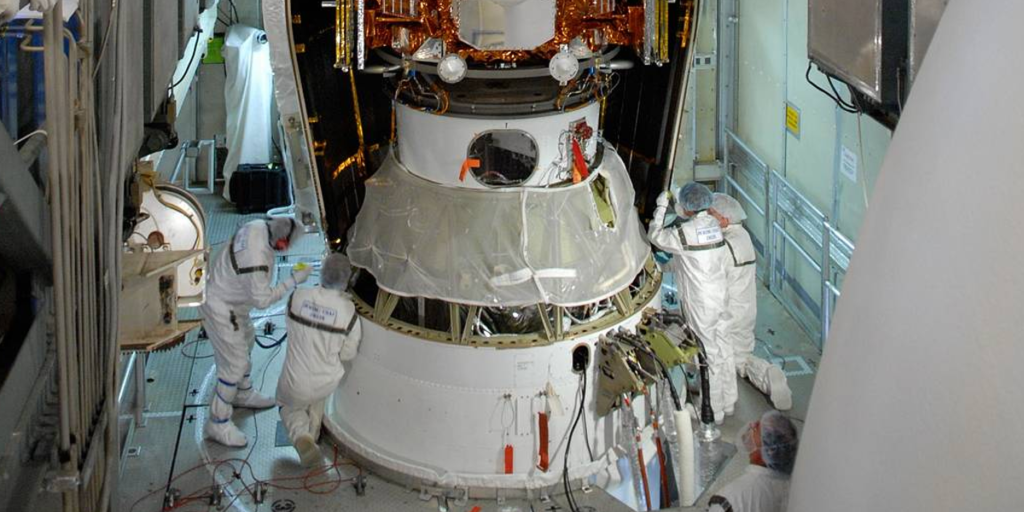
Huntsville, Ala. native and NASA astrophysicist Dr. Colleen Wilson-Hodge and the Fermi Gamma-ray Burst Monitor (GBM) team have been awarded the 2018 Bruno Rossi Prize, the top prize in high-energy astronomy. In August of 2017, the Gamma-ray Burst Monitor on NASA’s Fermi Gamma-ray Space Telescope detected something that scientists have suspected for decades; that a collision of two neutron stars would produce gravitational waves and create “short” gamma-ray bursts. Gamma-ray bursts are the most powerful explosions in the cosmos, and this particular burst was quiet abnormal. Wilson-Hodge and her team have the given the world the first ever detection of light from the same source as gravitational waves, which according to NASA are “ripples in space and time.” “When we built GBM and launched it on Fermi in 2008, we designed it to detect gamma-ray bursts well,” Wilson-Hodge told NASA. “Back then, it was only slated to fly for five years. Today, GBM is at the forefront of an entirely new type of science, ushering in this new era of multi-messenger astronomy.” Tyson Littenberg, a member of the LIGO Scientific Collaboration, the team that helped GBM realize the significance of their discovery, explains the encounter this way; “This new way of learning about the universe is kind of like gaining a new sense. It’s as if we’ve been watching the news for all of human history, but the T.V.has been on mute, now with gravitational wave detectors, we’re finally able to turn on the sound.” “Discovering the first unambiguous gamma-ray burst associated with a gravitational wave has been an extremely exciting discovery,” said Wilson-Hodge. “It would not have been possible without the incredible dedication and amazing scientific contributions of the entire Fermi GBM team.” Wilson-Hodge earned her Ph.D in Astrophysics from the University of Alabama in Huntsville, her love for the cosmos began in Elementary school, and only grew from there. In college she became a NASA co-op student, and met Jerry Fisher, he was working on the Burst and Transient Source Experiment at the Compton Gamma Ray Observatory at the time. His excitement for the project and for gamma-ray bursts were “infectious” to Wilson-Hodge, “this was something that was discovered almost within my lifetime, and I was just really excited and wanted to be a part of that.” she said in an interview with UAH. Wilson-Hodge has been on the forefront of many new discoveries in the cosmos, in 1999 she discovered two new kinds of pulsar called an X-ray pulsars, and in 2012 she discovered unexpected changes in X-ray emissions from the Crab Nebula.
Alabama cyber security programs ramp up amid rising threats

Protecting the nation’s infrastructure, industries and sensitive information in the digital age is the focus of advanced research taking place across Alabama. Universities are boosting their research efforts in the field of cyber security, along with programs that produce highly skilled graduates. Gov. Kay Ivey, second from left, stands with officials from the U.S. Space & Rocket Center in Huntsville, after she presented a $10 million check to expand its Cyber Camp program. The expansion will increase the number of students in cyber-security fields of study and increase awareness of workforce opportunities in Alabama. (Jamie Martin / Governor’s Office) Gov. Kay Ivey also recently announced the formation of a new high school focusing on cyber technology and engineering, which will be based in Huntsville. The school will prepare Alabama’s top students for jobs in these in-demand fields. In addition, she gave a $10 million economic development grant to the U.S. Space & Rocket Center to expand the activities of its Cyber Camp, where selected students receive training in technology. At Auburn University, the new director of the Auburn Cyber Research Center said his goal is to establish a greater focus on economic impact in Alabama. To accomplish this, the center’s research is focused on improving cyber security in industries that are major economic drivers in the state, such as health care, manufacturing, agriculture, chemicals and more, said David Umphress, an Auburn engineering professor with nearly 40 years of experience in software and systems engineering in academic, military and industrial settings. “What we’re trying to do is research that is directly in line with improving cyber security within those economic drivers,” he said. Cyber security center Manufacturing is a key economic driver in Alabama, and a growing segment is additive manufacturing, or 3-D printing. The practice involves fabricating parts layer-by-layer from metals, plastics or other materials based on a 3-D computer-aided design model. “There’s an entire digital information exchange on how people build things, and if you change just a little bit of that, you could change the entire product,” Umphress said. “If you were a bad guy, you’d want to get in there and change it just a little so that product doesn’t perform as it should.” Umphress said he wants Alabama to become the go-to source for companies across these industries when they want to know the best ways to protect their products, processes and other information. David Umphress serves as director of Auburn University’s Cyber Research Center. (Auburn University) “We’re trying to put Alabama in the forefront of all of those areas,” he said. The Auburn Cyber Research Center supports the overall mission of Auburn’s McCrary Institute for Critical Infrastructure Protection and Cyber Systems by conducting research in the field of cyber security. The mission of the McCrary Institute, named for former Alabama Power Co. CEO Charles McCrary, is to study protection of the nation’s infrastructure, including power grids, transportation systems and supplies of natural resources. In addition, Auburn was recently awarded a five-year, $4.7 million National Science Foundation CyberCorps grant to help address the shortage of public sector cyber security professionals. The shortage of skilled cyber security professionals has dramatically come to light amid high-profile consumer data breaches and increasing concern about public infrastructure’s heavy reliance on computers. “Even up until 10 years ago, we didn’t pay a lot of attention to it. It wasn’t until we reached this global economy, with information driving so many things and so many mobile devices and homes and cars filled with computers,” Umphress said. “With all that global connectivity, the demand for cyber security surged so quickly, and that’s also driven up the criminal element to try to exploit the weaknesses.” Expanding emphasis Elsewhere in Alabama, there are similar efforts to expand cyber security education and research. The University of Alabama in Huntsville is also participating in the NSF CyberCorps “Scholarships for Service” (SFS) program. The university, which received a $4.2 million grant, recently awarded 10 students full cyber security scholarships. The scholarships include full tuition and fees, and an annual stipend of $22,500 for undergraduates and $34,000 for graduate students, among other benefits. The staff of the University of Alabama Cyber Institute includes, from left, Reg Hyde, Dr. Winnie Callahan, John Callahan and Dr. David Mayhew. (University of Alabama) “UAH has a large number of students across four majors pursuing computing degrees, making it easy to find a cohort of top-notch students for SFS,” said Dr. Tommy Morris, an associate professor of electrical and computer engineering and director of UAH’s Center for Cybersecurity Research and Education. “This year we have scholarship recipients from the fields of computer engineering, computer science and information systems, as well as from UAH’s interdisciplinary master’s program in cybersecurity.” At the University of Alabama Cyber Institute, there have been new additions to the staff, as well as a refocusing of research and academic priorities. Several researchers have joined the team, allowing the Cyber Institute to branch into the areas of supply chain risk management and secure architecture. The moves also are improving teaching in the area of cyber security. “We are concentrating on areas where there is tremendous interest or demand among the private sector or government, but where there is little work being done, particularly by universities,” said Reg Hyde, the institute’s executive director. For example, the Cyber Institute’s effort to study supply chain risk management is headed by Dr. Darryl Williams, a leading expert in the field with more than 20 years of experience in both government and the private sector. His Supply Chain Risk Management and Analysis Laboratory is focused on the integrity of systems and components that are a part of national security and defense. These programs can be compromised if inferior or doctored components get into the supply chains, and UA is the only university in the nation tackling the full scope of this threat. The new research efforts have prompted interest in collaborating with UA from the U.S. Department of Defense, Fortune 500 companies and the intelligence community, Hyde said. This story originally appeared on the Alabama Department of Commerce’s Made in Alabama website. Republished with permission from the Alabama
These Alabama colleges give you the best bang for your buck

Wondering where you can get a good college education for a decent price? SmartAsset, a New York-based financial technology company, may be able to help. They recently released the 2017 Best Value Colleges list for the state of Alabama. So which Alabama college gives you the best bang for your buck? That would be the University of Alabama in Huntsville. For the second year in a row, the Rocket City college comes in the top spot in the state. With an average starting salary of $55,000, average tuition of $9,158 per year and 80 percent retention rate, the Huntsville-based university ranks 62 nationally. Earning a college degree can increase your skill set, job prospects and net worth. But with rising college costs, where you choose to get that degree from can make a big difference. SmartAsset analysts looked at five factors to determine the best value colleges and universities: tuition, student living costs, scholarship and grant offerings, retention rate and starting salary. To capture the true cost of attending a school, the rankings included tuition (using in-state tuition for public schools where applicable), student living costs (including room and board, books, supplies, transportation and other personal expenses), and the average scholarships and grants offered to students of the school. Here’s a look at the top 10 best-value colleges in Alabama in 2017:
Alabama Small Business Development Center has big impact

The Alabama Small Business Development Center (SBDC) Network was recognized recently for its role in helping thousands of small businesses in Alabama, as part of national “SBDC Day” to share the impact SBDCs have in communities across the country. The Alabama program is an accredited member of America’s SBDC, the largest and most comprehensive business assistance network in the U.S. “Alabama fosters an environment that allows small business enterprises to put down roots and thrive,” said Greg Canfield, secretary of the Alabama Department of Commerce. “The Alabama SBDC Network leverages resources from Alabama’s higher education institutions and is a vital part of the state of Alabama’s support system to help small firms succeed. “Their programs for capital access, government contracting and international trade are important for small business growth and help sustain the state’s entrepreneurial culture.” Small business is a vital component of the Alabama economy. Approximately 97 percent of the state’s businesses are considered small, with fewer than 500 employees. More than 300,000 small businesses provide more than 765,000 jobs, representing almost half of the state’s workforce. Fostering growth Growing and sustaining the small business sector is a key component of the Alabama Department of Commerce’s Accelerate Alabama 2.0 strategic plan. Working in partnership with Commerce, the Alabama SBDC Network plays an important role in accomplishing the plan’s goal for fostering entrepreneurship and innovation. The Alabama SBDC provides confidential, no-cost technical assistance and is a proven resource for aspiring and emerging small business owners. Over the last five years, the SBDC assisted 10,710 small firms in Alabama and helped 987 new business startups. It facilitated access to $379.6 million in capital for small business expansion projects. Among the Alabama companies the SBDC has assisted are Creative Concepts, a candy maker; Motus Motorcycles, whose handcrafted bikes have smashed speed records; and Sun Charge Systems, which produces solar-powered benches that act as charging stations. In addition, clients of the SBDC’s Procurement Technical Assistance Center (PTAC) program reported winning $1.45 billion in government contracts during the five-year period. These efforts created and retained 4,359 jobs. Figures are supported by client attribution and are not projections or estimates. SBDC customers have experienced 12.9 percent sales growth vs. the national average of 3.4 percent and employment growth of 8.5 percent vs. the national average of 1.9 percent. The program also helps new business spinoffs from university and industry research. A majority of the participants in Alabama Launchpad and other pitch competitions receive help from the SBDC. As economic developers look at ways to help local existing industry, the Alabama SBDC Network is a viable resource with 10 offices and 25 professional business advisers. Many advisers are co-located with incubators and local economic development organizations and travel to meet business owners in all 67 counties. The program is hosted by the University of Alabama and participating institutions include Alabama State University, Auburn University, Jacksonville State University, Troy University, University of Alabama in Huntsville, University of North Alabama, University of South Alabama and the University of West Alabama. The SBDC is a partnership program with the Small Business Administration, the state of Alabama and higher education institutions. For more information on small business assistance, please contact Eddie Postell in the Small Business Division of the Alabama Department of Commerce and visit the SBDC website. This story originally appeared on the Alabama Department of Commerce’s Made in Alabama website. Republished with permission of Alabama NewsCenter.
New study looks at tornadoes on Alabama’s Sand Mountain

Researchers are trying to determine why the Sand Mountain area of northeast Alabama seems so prone to tornadoes. The University of Alabama in Huntsville says scientists and students will spend the next year studying the role that the region’s mountains and valleys play in twister formation. The work is being performed with a nearly $250,000 grant from the National Oceanic and Atmospheric Administration. A release from the school says the area was affected by 49 tornadoes in the last decade. Thirty-two of those formed atop Sand Mountain, which is about 15 miles wide and at one point rises 700 feet over the Tennessee Valley. Scientists suspect that geography combined with air flow play a part in tornado formation. They’re using radar and atmospheric profiling with computer simulations in the study. Republished with permission of the Associated Press.
New study spotlights ‘best value colleges’ in Alabama

College degrees are quickly becoming the new high school diploma, as in the minimum credential required to get even the most basic, entry-level job. But with rising college costs, where you choose to get that degree from can make a big difference. Which begs the question: where can you stretch your dollars the furthest to get the most bang for your buck at Alabama colleges? New York City financial technology company SmartAsset determined a Huntsville college that’s the greatest value in Alabama in 2016. According to SmartAsset’s 2016 Best Value Colleges list, the University of Alabama in Huntsville offers the best value in Alabama, out-ranking the 2015 leader Auburn University. SmartAsset looked at five factors to determine the best value colleges and universities: tuition, student living costs, scholarship and grant offerings, retention rate, and starting salary. To capture the true cost of attending a school, the rankings included tuition (using in-state tuition for public schools where applicable), student living costs (including room and board, books, supplies, transportation and other personal expenses), and the average scholarships and grants offered to students of the school. UAH ranked no.1 in 2016 because graduates land the highest average starting salary in the state ($53,000) for a tuition of $9,192, which is offset by an average of $6,800 in scholarships and grants. Graduates of Auburn, which fell to second this year, earn average starting salaries of $48,300 for in-state tuition of $9,852. Here’s a look at the top 10 best-value colleges in Alabama in 2016:


